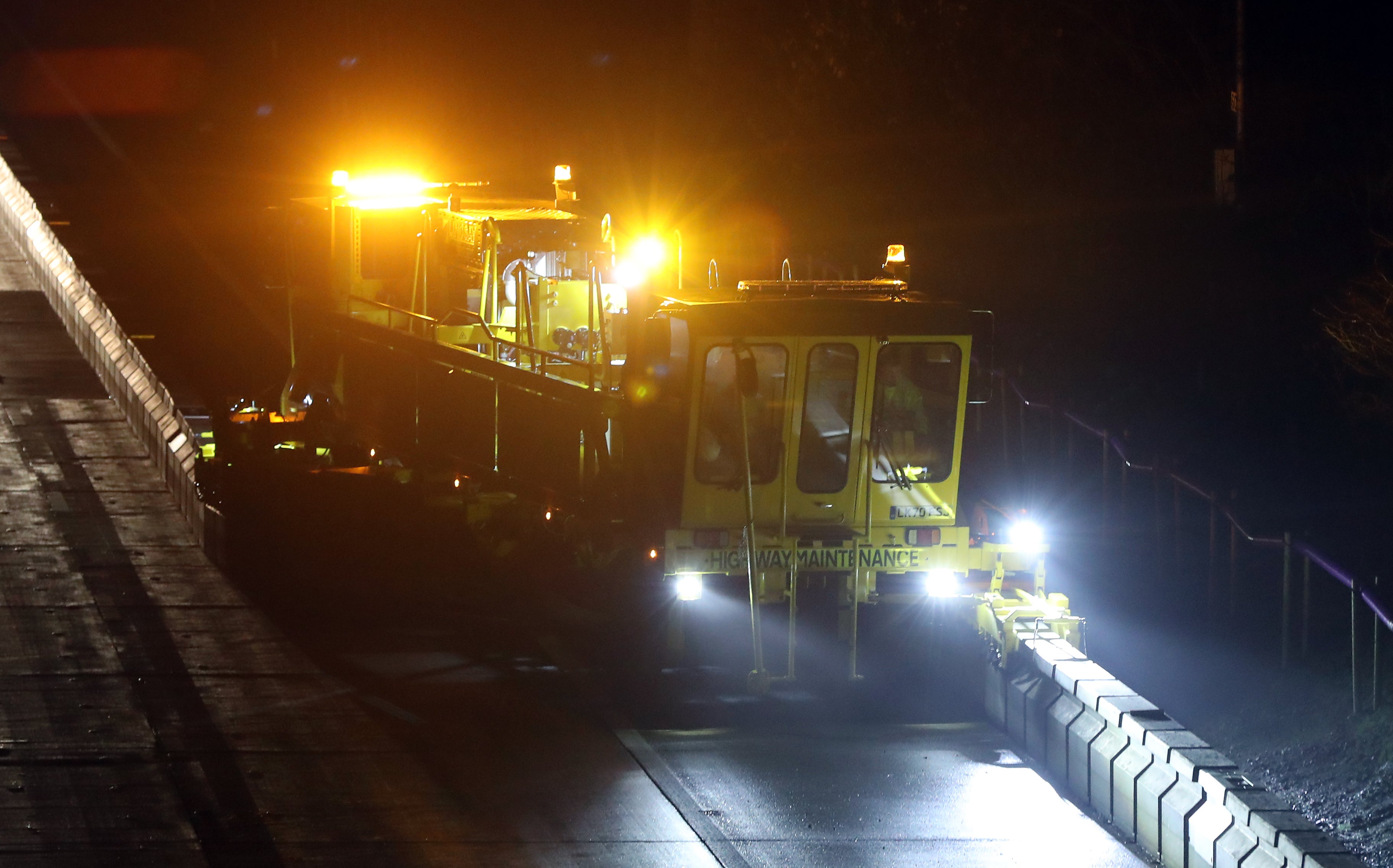Moving Brexit motorway barrier to cause delays for up to a year
Speed limits will be cut to 50mph during lane closures.

Your support helps us to tell the story
From reproductive rights to climate change to Big Tech, The Independent is on the ground when the story is developing. Whether it's investigating the financials of Elon Musk's pro-Trump PAC or producing our latest documentary, 'The A Word', which shines a light on the American women fighting for reproductive rights, we know how important it is to parse out the facts from the messaging.
At such a critical moment in US history, we need reporters on the ground. Your donation allows us to keep sending journalists to speak to both sides of the story.
The Independent is trusted by Americans across the entire political spectrum. And unlike many other quality news outlets, we choose not to lock Americans out of our reporting and analysis with paywalls. We believe quality journalism should be available to everyone, paid for by those who can afford it.
Your support makes all the difference.Work to relocate a motorway barrier built to reduce post-Brexit traffic disruption in Kent will cause delays for up to a year.
National Highways said lane closures on a 13-mile stretch of the M20 between junctions eight and nine will be required from later this month until October as it moves the Operation Brock barrier from the hard shoulder to the central reservation.
Speed limits will be cut to 50mph while this happens.
There will also be several overnight closures.
National Highways said the work, which involves an “extensive” drainage upgrade and new signage, will be carried out in phases and could take “up to 12 months”.
The moveable concrete barrier is used as part of Operation Brock to create a contraflow system on the M20 during delays with travel across the English Channel.
This enables vehicles heading to the Port of Dover or Eurotunnel terminal at Folkestone to queue on the motorway while enabling other traffic to keep moving in both directions.
The barrier was first deployed in December 2020, but is currently being stored on the hard shoulder.